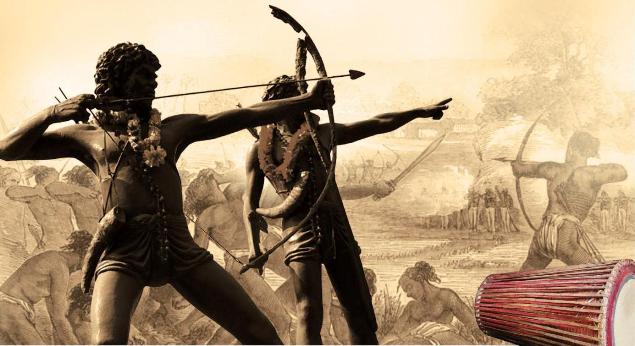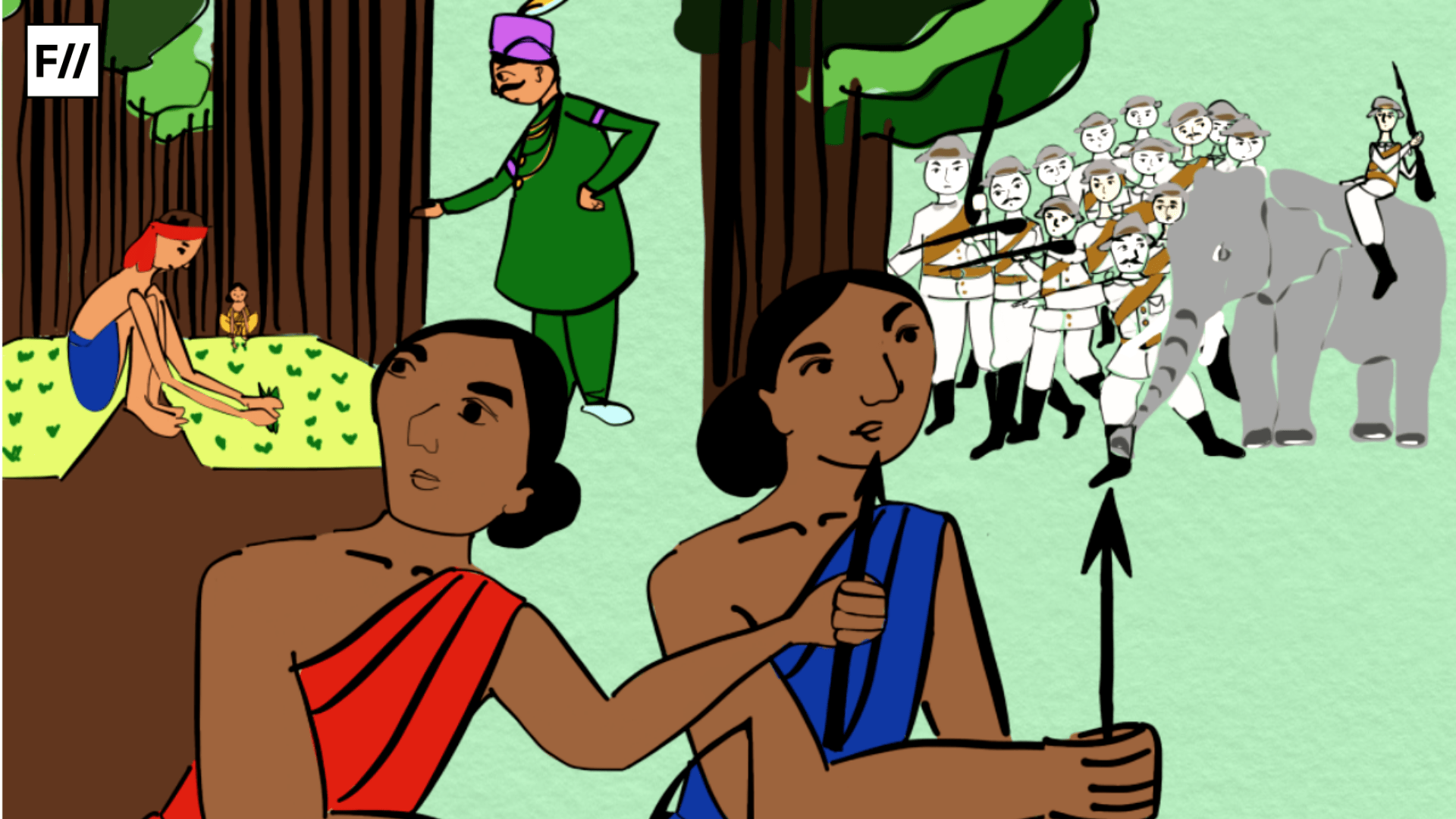Seldom do our history books have mention of revolts originating from struggles of indigenous tribes and clans. They have not been given their deserved importance in history. Two years before The Sepoy Mutiny of 1857, there was a revolution against the barbaric Permanent Settlement Act of 1793 of the British Raj. It was a revolution for freedom from serfdom under the Mahajani and Zamindari System. This Revolution was The Santhal Rebellion. However, British historians and many national historians perceive the movement as the harbinger of Indian National Congress’ movement for independence, thus, little emphasis is given on their struggle to protect their rights.
The Santhals migrated into India in the 18th century along with other tribes and took shelter in the forests and hills of North India. After the colonisation of Bengal by the British Raj, the British demarcated the Damin I Koh region (now in Jharkhand) and invited Santhals to settle in the area in order to reclaim the forest for farming and other forms of cultivation. A great populace of Santhals from Cuttack, Dhalbhum, Manbhum, Hazaribagh, Midnapore, etc. came to settle in these promising lands to enjoy a life like the non-tribals. The Santhals are often termed as “naïve and Noble savages” who were peace loving. Their low level of literacy got them caught in the shackles of the Zamindari system. The Britishers, though demarcated lands for these ‘outcasted’ people, but their moot point was to earn profits by exploitation of their land and labour.
Also Read: India’s Brahminical Idea Of Development Excludes Its Tribal Communities
According to the Permanent Settlement Act of 1793 by Lord Cornwallis, landlords would have perpetual and hereditary rights over the lands demarcated under their jurisdiction until and unless they were able to pay the required land revenue. Thus, to create this new class of zamindars, the British confiscated lands from the Santhals and other tribes. The Santhals had to serve these landlords, who would take away a large chunk of their agricultural expanses leaving them with almost nothing. To sustain themselves, they borrowed from money lenders, who would lend at exorbitant rates to an already vulnerable and impoverished group. They were forced into bonded labour and generations after generations, cultivated land to meet the demands of the conquerors. Many had to work in Indigo plantations or for the railway constructions that the British initiated.
Constant reluctance from the judiciary and administration, resulted in a revolt in the year 1855-56. This revolt was spearheaded by two brothers Sidhu and Kanhu Murmu along with their sisters Phulo and Jhano Murmu. They mobilised over 10,000 people. Sidhu’s claimed vision of God telling him the only way to achieve salvation from suffering and exploitation was mass uprising. The crowd decided to gather at Panchkatia.

The Officer in charge of the Diggih police outpost was killed in the rebellion. Store houses and granaries were also looted and set on fire. They headed towards the headquarters in Calcutta. However, when the news of their rebellion reached the administration, they sent troops to gun down the uprising. Arms and heavy weapons loaded with bullets and gunpowder were used in retaliation to bows, arrows and sticks. Elephants were used to destroy their villages. Sidhu and Kanhu were arrested and executed.
Phulo and Jhano Murmu, entered the enemy camp under cover and killed 21 soldiers before they died. The rebellion had a gruesome end. The British army who set villages on fire, killed and raped over 15000 Santhals to quash their resistance. As Karl Marx noted, “Outbreak of the Santhal, a half-savage tribe, in the Rajmahal Hills in Bengal; put down after seven months guerrilla warfare, in February 1856.” It was the wish of the Santhals to demand for self-governance through insurgency, which made the British so apprehensive that to prevent its spread to other peasant groups they quashed it in such horrifying ways. However, the other peasant groups did take part in the rebellion by providing food, milk and helped them carve weapons. It was this collective strength that scared the nationalists and orientalists; hence, they use the word ‘legend’ or ‘myth’, to describe indigenous revolts.
Ranajit Guha, a historian of the Indian Subcontinent whose arena consists of Subaltern Studies group, remarked how revolts in pre-independence Indian history is appropriated first by British historians and then by post-partition Indian national historians. In the book Annals of Rural Bengal by Scottish historian William Wilson Hunter, Guha says that Hunter appropriated the history like any other event in the “Life story of the Empire…The rebel has no place in this history as the subject of rebellion”. Nationalists on the other hand misinterpreted it into an aid to a larger majoritarian agenda, it was for the ‘greater good’ of nationalist insurgency like that of Congress’ struggle for independence. Their struggle for autonomy is lost and reinterpreted.
Also Read: 5 Prominent Indigenous People’s Movements That Hit Back At The State
The British took pride in the fact that they were civilising nomads by letting them into cultivation, but they were not at all concerned with the welfare of the Santhals. Indigenous peasant rebellions are often confused with any other movement for freedom in India. History doesn’t offer them a deserved mention and neither does our society in post-independence period. The Santhals continue to live under the shackles of debt and poverty. Slowly, their population is decreasing and with time their culture is being diluted and erased. They belong to the Adivasi community of Bengal, but little is being done by governments to protect them. The Santhal Rebellion had marked a class and caste struggle, which set a precedent for people to revolt to claim their rights. Sources claim that the rebellion was so also seen as the harbinger of the Naxalite movement of Bengal. The Santhal Rebellion is one of the most remarkable incidents history of pre-independent Indian Subcontinent.
References
Featured Image: Ritika Banerjee for Feminism in India





Congradulations•• your Tribal articles••